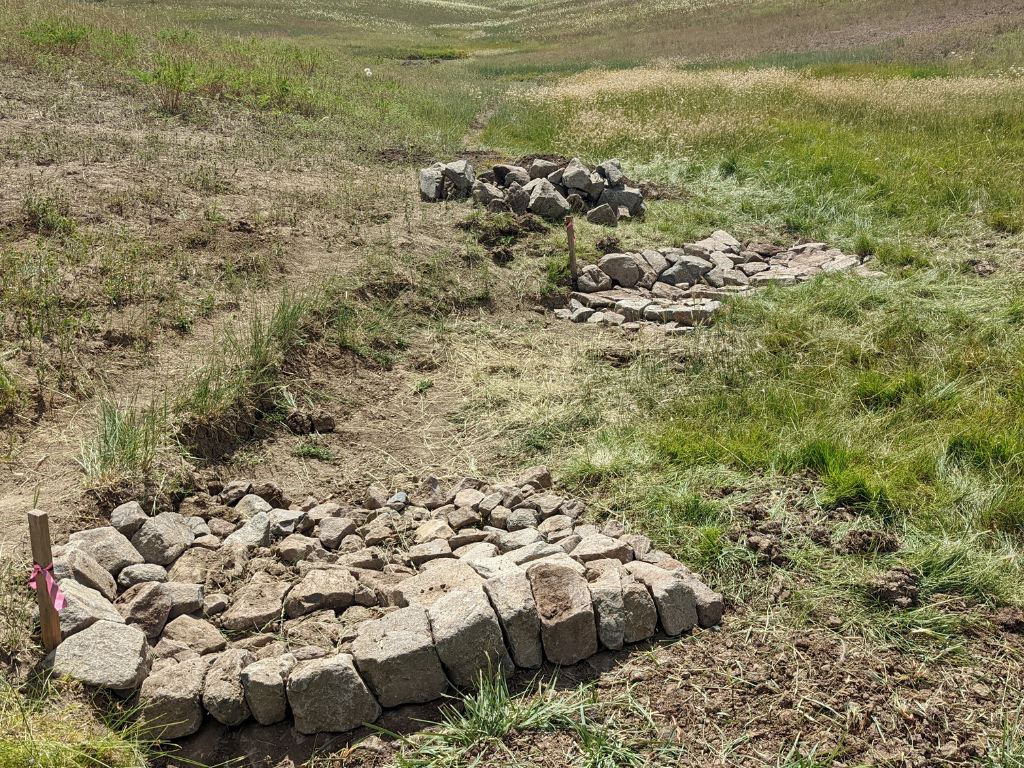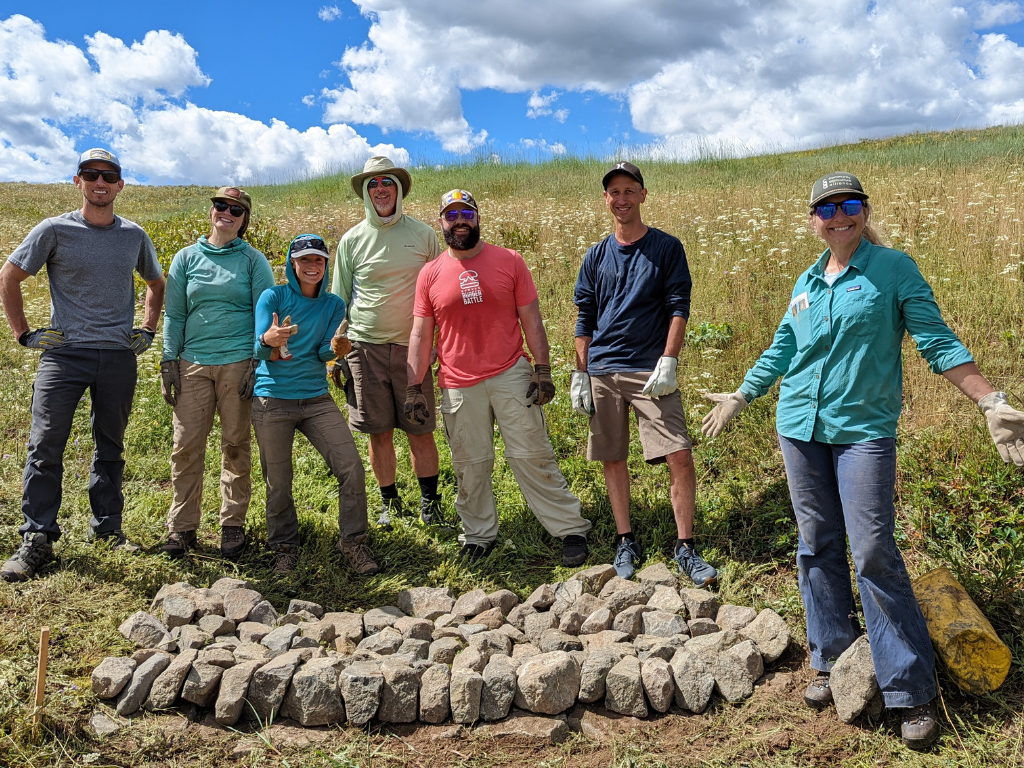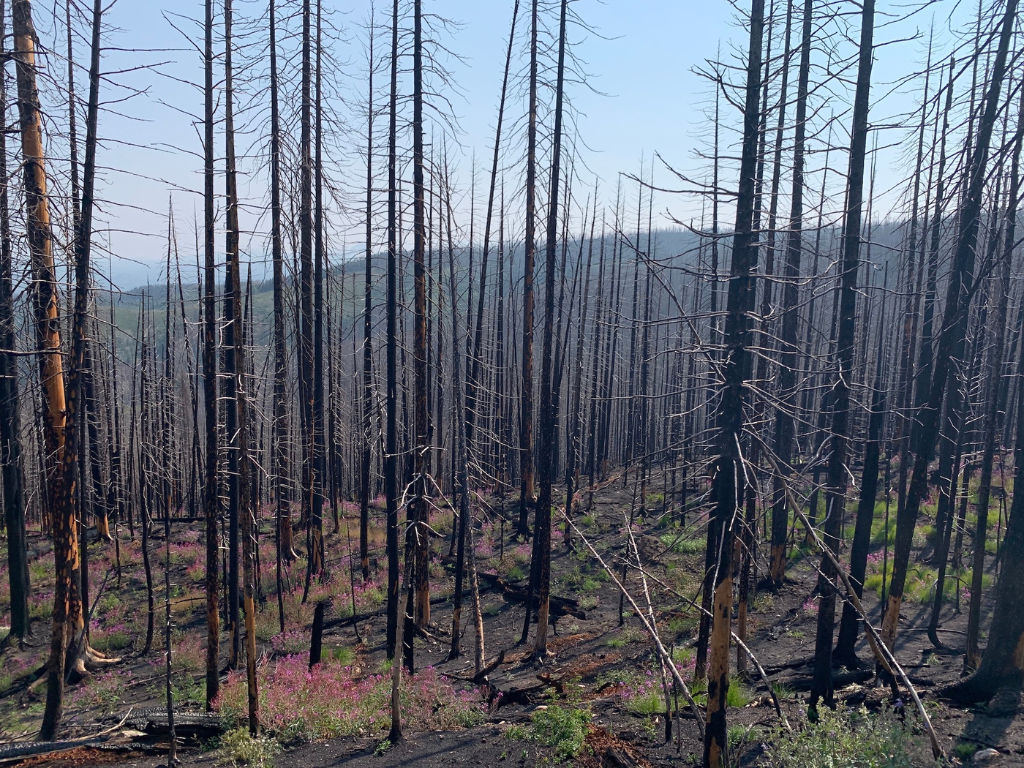Stewardship of the forests in our region is an enormous task. Carolina Manriquez, lead forester for the Steamboat Springs branch of the Colorado State Forest Service (CSFS), met to talk about trees and the work that her organization does in our area. CSFS is a cooperative agency under Colorado State University whose mission is the stewardship of the forests of Colorado for the foreseeable future.
A forester assesses the current state of the landscape, the vegetation, fire history, and human use, and also thinks forward about what will grow in an area in the near future using climate and drought predictions.
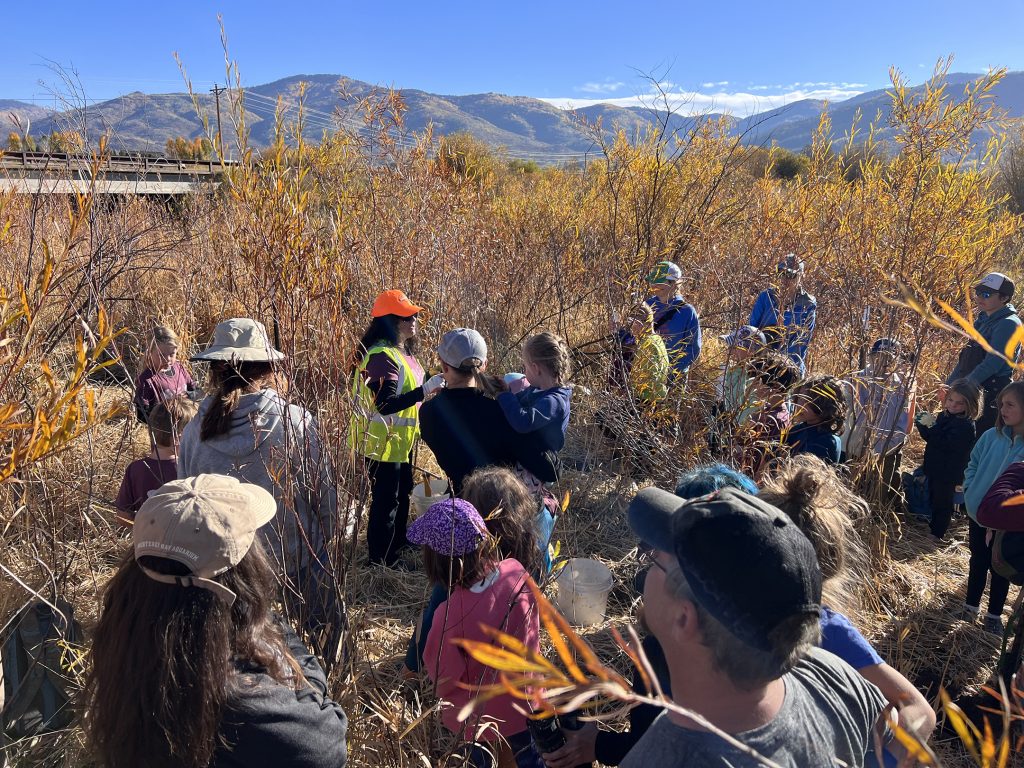
Colorado State Forest Service Lead Forester Carolina Manriquez speaks to volunteers during a ReTree event in 2023. Photo by Matt Barkin
In some sites that need help, the planned restoration work is attempting to repair what people did in the past. Natural functions may have been eliminated years ago, even hundreds of years ago. When agriculture was introduced or riverbank stability was achieved so houses could be built, this altered the landscape. Now, with decades of experience, there are ways to reintroduce some of the advantages of natural systems like trees, vegetation, wildlife and river flow, and still keep the modern human systems that we need.
Yampa Valley Sustainability Council (YVSC) participates extensively in tree planting and restoration with volunteers, especially in the fall, in partnership with CSFS and other organizations.
“We are planting trees because we need them for the future,” Manriquez said. Trees grow so slowly that anything we can do now will benefit our kids, future generations, and wildlife.”
A 2018 study from the City of Steamboat Springs found that the forest along the Yampa River needed restoration on the stretch that runs through town.
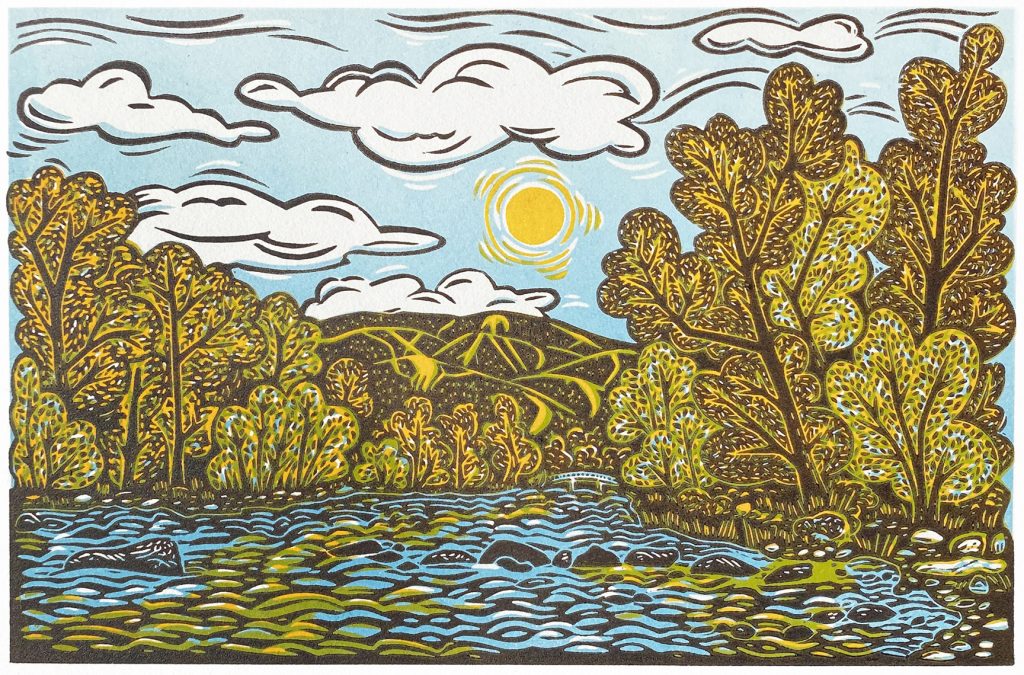
Yampa River Morning, linocut by Jill Bergman
Plants along the banks of rivers, streams or lakes are known as riparian vegetation. Improving the riparian corridor, especially tree cover, would shade the Yampa to lower water temperature in the summer and improve water quality. This became the main focus for YVSC’s ReTree program, in partnership with CSFS, the City of Steamboat Springs and Colorado River District. In addition to shade, healthy riparian vegetation stores carbon while producing oxygen, stabilizes river banks, and provides wildlife habitat on land and within the river.
Learn more about the Yampa River Forest Reforestation Project here.
ReTree in the Yampa Valley has been underway for 15 years now, and over 24,000 trees have been planted since its inception.
“We are actively creating climate resilience in our community by planting trees that will shade our river and mitigate rising water temperatures,” YVSC Natural Climate Solutions Manager Ryan Messinger said. “One tree may not do much, but thousands of trees working together will make a big difference. ReTree gives our community the chance to take care of our most precious resource, water, while fighting climate change.”
The Strength of a Cottonwood
In the riparian ecosystem through the Yampa Valley, the biggest native trees are narrowleaf cottonwoods. A cottonwood can grow 3-4 feet per year with enough water. A mature tree with a full crown will provide a lot of shade and habitat to understory species and wildlife.
Manriquez reminds us that tree growth is dependent on how good the soils are and how much water the tree can access. It takes a narrowleaf cottonwood about 40-70 years to achieve full height, and they live up to 120 years. At just 20 years old, it is already providing shade.
The spring high river flows that occur on the Yampa and Elk rivers help cottonwoods thrive and regenerate. These rivers go through natural cycles of flooding and drought. The Yampa River is minimally impacted by dams close to its headwaters, so it has the flow pattern of an undammed river. At high flow, cottonwood and willow stems are broken off, and they may land on the upstream bank of a river island, or somewhere else downriver, and sprout.
To learn more about cottonwoods and riparian vegetation, read the CSFS Cottonwood Management Guide.
It takes 5-10 years for a tree to become established and grow enough of a tap root to find water when needed.
“It’s difficult to grow trees,” Manriquez said. “That’s why we plant a lot more trees than we think we’ll need. Trees die because they don’t get enough water, were planted incorrectly, get trampled, munched on, or they get diseases. There are so many reasons.”
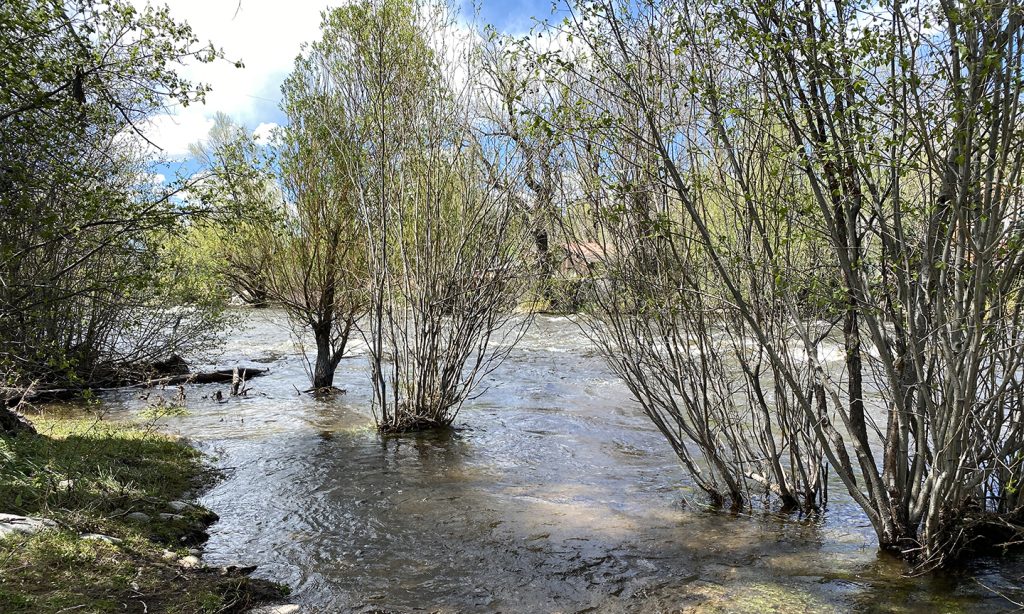
Cottonwoods and willows during the Yampa River’s spring high flows, photo by Jill Bergman
Having the community help plant trees and work on restoring a landscape is something that Manriquez really appreciates. “We have to be fostering not only the future of the trees, but also the future of our communities,” Manriquez said. “Helping with ReTree in the past, I had kids planting trees in second grade that were still planting trees in high school. There’s a history of ownership, responsibility, and belonging. We need to keep fostering that belonging and being part of nature, not apart from nature.”
YVSC encourages volunteers of all ages to attend a family-friendly ReTree event and take part in helping our ecosystem build resilience. Sign up for ReTree on September 21 here, September 28 here, or October 12 here.
Read Part 2 of the Healthy Forests series, Mountain Trees, here, and Part 3: The importance of fire, here.
Jill Bergman, YVSC Creative Climate Communications Associate | 10 September 2024


